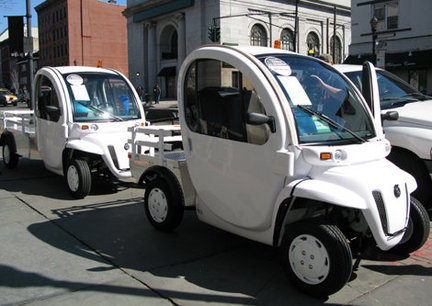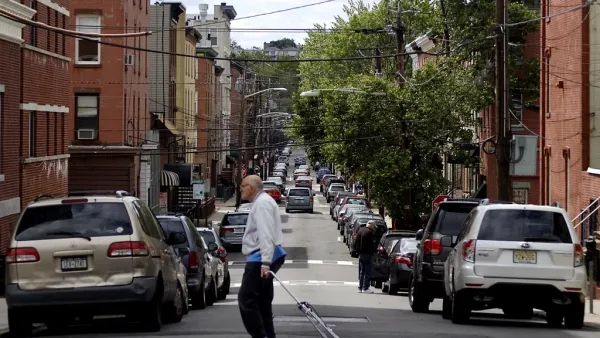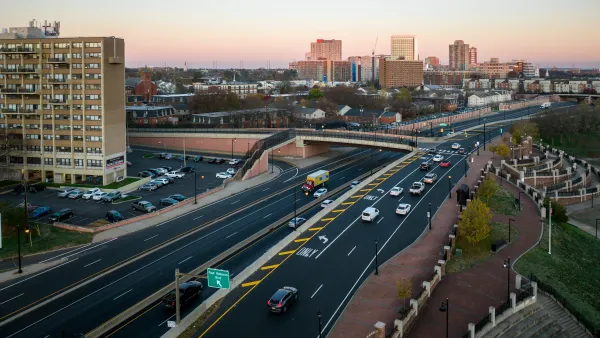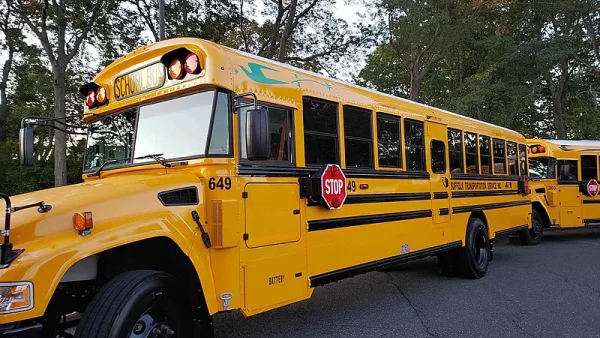When I inherited the Hoboken Parking Utility last year, it was hobbling along with all of the forward planning of a Friday night Rock-and-Bowl last call. With no time to build a new budget from the bottom up, I was left to remold what I found into something a little less status-quo and a little more innovative. In a scrutinizing political climate and tough economic conditions, the changes had to be both necessary and serve as an example of ways to reduce costs.
When I inherited the Hoboken Parking Utility last year, it was hobbling along with all of the forward planning of a Friday night Rock-and-Bowl last call. With no time to build a new budget from the bottom up, I was left to remold what I found into something a little less status-quo and a little more innovative. In a scrutinizing political climate and tough economic conditions, the changes had to be both necessary and serve as an example of ways to reduce costs.
One area that caught my eye was the replacement of two Utility pick-up trucks with similar brand new vehicles at an estimated $25,000 each. These trucks are used for driving around our mile-squared city posting signs, installing and removing boots, stationing officers, and responding to specific parking concerns. We don't have heavy loads or emergency response requirements, and our city is relatively flat (not including post-winter potholes). Maintenance costs on the two trucks was way up recently since they were getting up there in miles and of course the constant idling all over town for short tasks left annual fuel bills in tens-of-thousands range.
I decided to try something entirely different that very likely did not please the staff straight away; instead of two tough new pick-up trucks with gas engines, we would order two dainty fully electric "Neighborhood Electric Vehicles" (NEV's) at a price savings of almost 2 to 1 and use these vehicles for our local daily chores. These cars have a 30-40 mile range on one charge, enough for a day's work in our little city. The vehicles, while basic, are required to function as a car in every respect except that they are limited to 25 mph and can't be driven on streets with speed limits higher than this, perfect for many downtowns throughout the country. They include a small heater for colder months, windshield wipers, turn signals, and doors that protect passengers from elements and are removable in the nicer months. The models we ordered included steel plated beds for us to place larger equipment such as meter bags, meters, and vehicle immobilization devices (boots).

These two electric vehicles can run around downtown all day long on a charge.
NEV's are practical and useful in our city because they don't take up much space or block traffic with their narrow dimensions, they operate quietly and instantaneously, no power is consumed when idling, and they plug right into the wall to charge. With such a dramatic shift in Utility operations, the press were very fond of the cars, which allowed us to get the message out that the funky looking vehicles driving around town were half the price, use 90% less energy (comparing gasoline to electricity costs for similar mileage), and similarly reduce maintenance costs by 90% since the thousands of parts in an internal combustion engine are replaced by a simple battery pack and an electric motor.
We've had two NEV's for a month now and they seem to be serving our purposes just fine. We're hoping that we set an example to other city departments and to residents that these vehicles are a perfect fit for Hoboken. We're even looking to change the speed limit on the one street in Hoboken that is not 25mph back down from 35mph so we can drive anywhere in town! For other cities where there is a large downtown area, NEV's make you wonder why a gasoline vehicle for regular activities is needed at all.

Analysis: Cybertruck Fatality Rate Far Exceeds That of Ford Pinto
The Tesla Cybertruck was recalled seven times last year.

National Parks Layoffs Will Cause Communities to Lose Billions
Thousands of essential park workers were laid off this week, just before the busy spring break season.

Retro-silient?: America’s First “Eco-burb,” The Woodlands Turns 50
A master-planned community north of Houston offers lessons on green infrastructure and resilient design, but falls short of its founder’s lofty affordability and walkability goals.

Test News Post 1
This is a summary

Analysis: Cybertruck Fatality Rate Far Exceeds That of Ford Pinto
The Tesla Cybertruck was recalled seven times last year.

Test News Headline 46
Test for the image on the front page.
Urban Design for Planners 1: Software Tools
This six-course series explores essential urban design concepts using open source software and equips planners with the tools they need to participate fully in the urban design process.
Planning for Universal Design
Learn the tools for implementing Universal Design in planning regulations.
EMC Planning Group, Inc.
Planetizen
Planetizen
Mpact (formerly Rail~Volution)
Great Falls Development Authority, Inc.
HUDs Office of Policy Development and Research
NYU Wagner Graduate School of Public Service





























